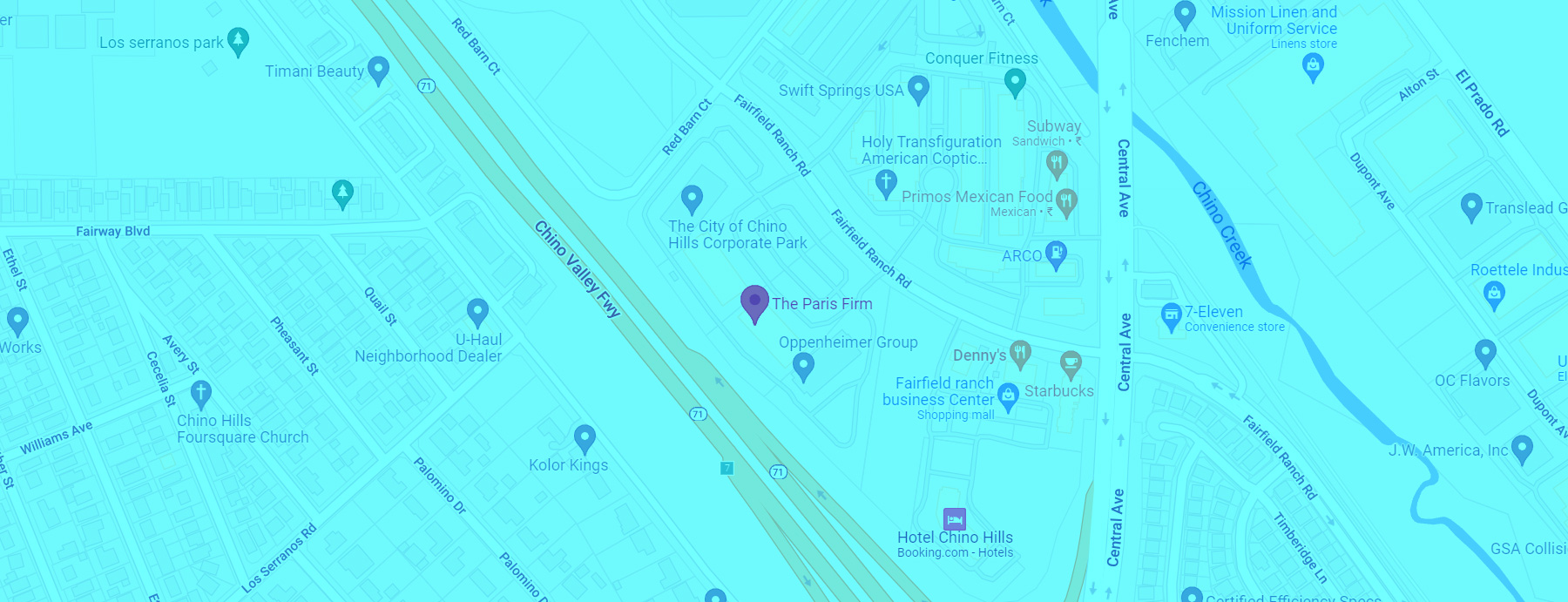What is the California Legal Definition of a Catastrophic Injury?
While some states have a specific legal definition of catastrophic injuries, California does not. States that have legal definitions for catastrophic injuries are typically no-fault states for personal injury cases. In these states, personal injury victims must go through their own insurance company provider to recover compensation. California, on the other hand, is an at-fault state (also known as a tort state). In our state, personal injury victims can recover damages from the at-fault parties responsible for their accident and subsequent injuries.
As such, the legal definition of a catastrophic injury isn’t necessary for personal injury cases in the eyes of the law. That said, it is still worth recognizing a personal injury as catastrophic for the purposes of insurance coverage and financial recovery.
Insurance companies put up more of a fight in legal battles involving catastrophic injuries as they stand to pay more in terms of damages. If you or a family member have been catastrophically injured, you must retain professional legal representation when seeking to recover a financial settlement.
What Are Different Types of Catastrophic Injuries?
In the year 2022, California saw a million non-fatal catastrophic injuries. These injuries cost roughly $1,000,000 per case and left catastrophic injury victims with long-term disabilities, financial burdens, emotional trauma, mental anguish, and untold amounts of suffering.
Personal injury law covers several types of cases and injuries, but catastrophic injuries are the most severe non-fatal injury type. Typically, a catastrophic injury leaves the victim permanently damaged and their life forever altered in a negative way.
Common examples of catastrophic injuries include:
- Amputations and loss of limbs.
- Birth injuries.
- Complete or partial paralysis.
- Disability.
- Disease and infection.
- Facial disfigurement.
- Hearing loss.
- Internal bleeding and organ damage.
- Loss of sight.
- Multiple bone fractures.
- Nerve damage.
- Occupational illnesses.
- Scarring.
- Severe burn injuries.
- Severe concussions.
- Severe pain and suffering.
- Spinal cord injury (SCI).
- Traumatic brain injury (TBI).
Perhaps the most referred to catastrophic injuries in California are traumatic brain injuries and spinal cord injuries. Whatever type of injury you or your loved one has suffered, though, you deserve the right to recover compensation for your injuries and other losses. Schedule a free case evaluation with our personal injury law firm to discuss your catastrophic injury case in more detail today.
What Are Common Accidents That Cause Catastrophic Injuries?
A catastrophic injury could result from any accident, but certain accidents like car accidents, assaults, and gunshot injuries are among the leading causes of catastrophic injuries.
Motor vehicle accidents, including car crashes, commercial trucking accidents, pedestrian accidents, and motorcycle accidents, are the leading causes of spinal cord injuries. They are also the second leading cause of TBIs.
Slip-and-fall accidents or trip-and-fall accidents are the leading cause of traumatic brain injuries. A fall and sudden stop can cause head trauma that may result in long-term disability. Slip and fall accidents are among the most common premises liability cases.
Workplace accidents are among the leading causes of the loss of limbs, blindness, hearing loss, and disfiguring injuries.
Sports-related accidents can be traced to head trauma, broken bones, and sometimes paralysis.
Medical malpractice and negligence on behalf of physicians are also common causes of traumatic brain injuries, birth injuries, infections, and other catastrophic injuries or illnesses.
Assaults and attacks with deadly weapons are also common causes of catastrophic injuries, making up 5% of California’s 1.2 million catastrophic injuries in 2022.
Other common causes of catastrophic injuries include construction site accidents, boating accidents, dog bites and animal attacks, bicycle accidents, train accidents, and self-inflicted wounds.
Who is at Fault in Your Personal Injury Case?
California personal injury law operates under a pure comparative negligence system. As a personal injury victim, you can recover financial compensation for your injuries and other losses. However, if you were partially at fault for the accident, your full settlement could be reduced.
Determining fault in your personal injury case can be a complicated ordeal. Many times, the other party will attempt to claim that you are to blame for the accident, not them. Additionally, as catastrophic injuries often involve costly settlements, insurance companies are likely to fight harder against paying the monetary damages that victims deserve. For these reasons, it is wise to hire a higher personal injury lawyer to represent your legal interests as you pursue monetary damages for your accident case.
What Legal Recourse Do You Have as a Catastrophic Injury Victim in California?
Experienced personal injury attorneys can help you seek financial compensation for your personal injury case. Additionally, your lawyers are better equipped to help you through different programs that California law has set out to help victims of catastrophic injuries.
The California Tort Claims Act (CTCA) is a law that states how and when you can sue government entities for causing catastrophic injuries.
The Catastrophic Leave program (CAT) allows workers who have exhausted their leave credits and must miss work due to a catastrophic illness or injury to request leave.
The California Product Liability Act is a law that allows you to sue product manufacturers for defective products that cause injuries.
The California Premises Liability Act allows injured victims to sue negligent property owners if they were injured on public or private property.
The California Workers Compensation Act (WCA) provides benefits to workers injured on the job.
The California Wrongful Death Act allows families and representatives of the deceased to collect damages for fatal catastrophic injuries.
How Long Do You Have to File a Personal Injury Claim in CA?
You have a limited amount of time to file a catastrophic injury lawsuit in California. Generally, you have two years from the date of the injury to file your claim. However, if your claim is against a government entity, you may have as little as six months to file your personal injury claim. Additionally, medical malpractice claims must be filed within one year of knowledge of your injury or illness.
Can a Catastrophic Injury Lawyer Help You Seek Compensation?
Catastrophic injury lawyers can help you seek monetary compensation for your accident injuries. This compensation may come in the form of economic and non-economic damages. In certain extreme cases, it may also be possible to pursue punitive damages.
Economic damages may include lost wages, lost income earning capacity, past medical bills, future medical expenses, physical therapy expenses, property damage, and burial expenses. Non-economic damages may include disfigurement, dismemberment, disability, emotional distress, pain and suffering, lost quality of life, and wrongful death.
Schedule a Free Consultation with Catastrophic Injury Attorneys Today
Catastrophic injuries can have a long-lasting negative effect on a victim’s life, sometimes forever altering their ability to care for themselves, perform their duties at work, or even get out of bed in the morning. The medical ramifications of such an injury can be extensive and costly.
Considering the long-term complications and suffering often associated with catastrophic injuries, it is highly recommended that victims and their families retain professional legal counsel experience in handling catastrophic injury cases.
Schedule a free consultation with our highly skilled legal team to discuss your personal injury claim today. 909.325.6185.











